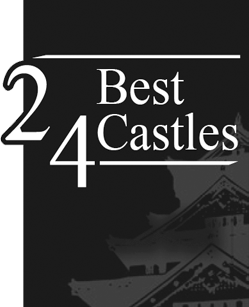Nijo Castle was built by the Shogun Tokugawa Ieyasu for the protection of Kyoto and as lodging for the Shogun. Major renovations were carried out in 1626 for the visit of Emperor Go-Mizunoo, bringing it to its current form. A five-story tenshu stood in the south-west corner of the Honmaru, a three-story yagura watchtower in the northwest corner, and two two-story yagura on the eastern corners were connected surrounded by tamon yagura, being enclosed corridor like structures. Nijo Castle was witness to both the beginning and the end of the Edo Shogunate. Tokugawa Ieyasu was invested as Shogun here in 1603, and 265 years later, the last Shogun, Tokugawa Yoshinobu announced his resignation and the return of the nation to the Emperor in the remaining palace. The Ni-no-maru Goten Palace is designated a National Treasure and a World Heritage Site. It is Japan’s oldest existing palace building and its’ gorgeous appearance shows the prestige and authority of the Shogunate.




 Access
Access
 Address
Address
 Official Site Link
Official Site Link